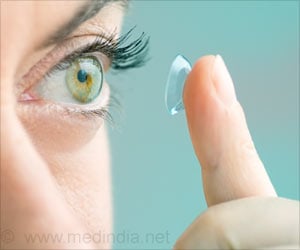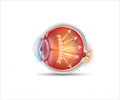Highlights
- Contact lens that delivers drug for glaucoma patients for 6 months developed by researchers.
- Increased concentration of the drug in the lens is found to be more effective in controlling eye pressure than eye drops.
- This method of drug delivery eliminates hindrances associated with eye drops.
Difficulty Faced With Using Eye Drops
The addition of eye drops seems like a simple procedure but there are a lot of hurdles that need to be crossed, especially if it involves a senior citizen.
- Some senior citizens find it hard to position the bottle above the eye, with a gentle quivering of the hand adding to the problem.
- The correct amount of medication is rarely administered into the eye.
- In most instances, senior citizens depend on caregivers to administer the eye drops who may not always be available.
- People tend to forget or miss administering the drops at the right time.
Glaucoma specialist Dr. Janet B. Serle from Mount Sinai’s Icahn School of Medicine “This promising delivery system removes the burden of administration from the patient and ensures consistent delivery of medication to the eye, eliminating the ongoing concern of patient compliance with dosing”
Drug Delivering Contact Lens
The concept of using a contact lens to deliver medication is not new and research into this method of drug delivery has been ongoing for the past 50 years but an effective solution has not been reached, till now. The earlier models delivered the medication too fast and too quick.Design of the Drug Delivering Contact Lens
The researchers used drug encapsulated thin film of polymers at the periphery of the contact lens, that left the center of the lens clear for good vision. The polymer present at the periphery retards the delivery of the drug.Glaucoma
Glaucoma is a term used for a group of diseases that lead to increased pressure on the optic nerve, resulting in a partial or complete loss of vision. Early detection of glaucoma will aid in treatment and lower risk of complete vision loss.
Glaucoma produces no symptoms and is noticed only when vision loss begins. Once the vision is lost, it cannot be restored. The medication that is used to treat glaucoma either make the eye produce less fluid or drain the fluid that is produced.
Medication for glaucoma is usually in the form of eye drops or pills.
Glaucoma Prevalence in India
According to a study by George R and colleagues titled “Glaucoma in India: estimated burden of disease’ and published in the Journal of Glaucoma, the following are the statistics in India
- 11.2 million people over 40 years have glaucoma
- 6.48 with primary open angle glaucoma
- 2.54 with primary angle-closure glaucoma
- Over 3 million expected to be affected.
- 120,000 are blind as a result of glaucoma.
Study on Effectiveness of the Drug Delivering Contact Lens
Boston Children's Hospital Technology and Innovation Development Office supported a study that detailed the effectiveness of the drug delivering contact lens. For this study 4 glaucomatous monkeys were administered with the drug delivering contact lenses. The researchers studied the effectiveness of the latanoprost drug delivering contact lenses with the eye drops of the same drug.The results showed that when the concentration of latanoprost in the drug delivering contact lens was the same as in the eye drops, the effectiveness was comparable. However, higher concentration of latanoprost in the contact lenses resulted in greater reduction in pressure.
Advantages
- The drug is delivered without the need for a caregiver or self administration.
- Higher concentration of the drug latanoprost found to control eye pressure better than eye drops.
- The drug polymer is present at the periphery so the central part of the lens is clear, this allows vision acuity, hydration and breathability.
- The lens can also be used to correct refractive error in the individual.
References:
- Glaucoma in India - (http://www.ncbi.nlm.nih.gov/pubmed/20711029)
- Glaucoma Facts - (http://www.glaucoma.org/glaucoma/glaucoma-facts-and-stats.php)
Source-Medindia















